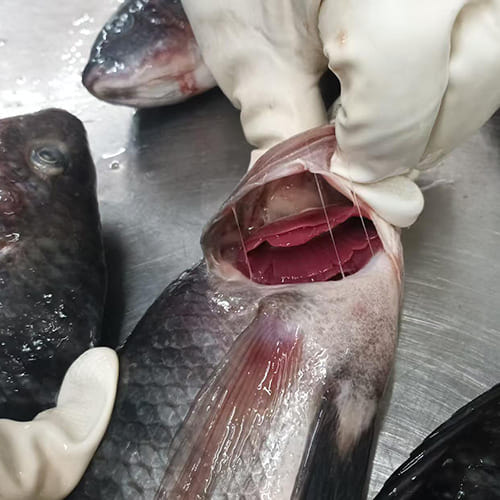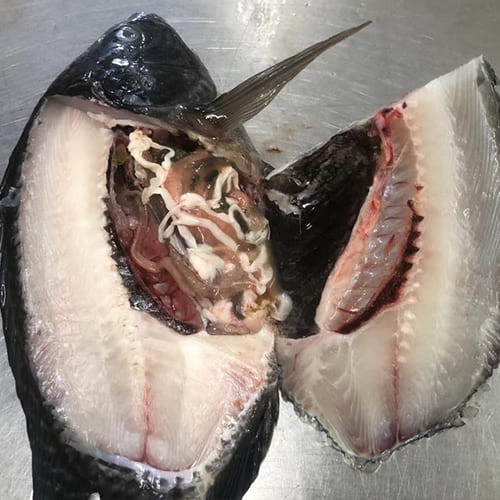Finding a reliable tilapia source feels impossible. Inconsistent quality can harm your reputation and profits.
The best option is to work directly with a certified producer who acts as your partner.
For high-quality wholesale whole tilapia, it is recommended to purchase directly from a certified producer and exporter in a major tilapia-producing country, such as China. This strategy guarantees access to consistent quality, food safety certifications, stable supply, and the best value for your business.**
As a long-time fish exporter, I have spoken with hundreds of business owners. They all face the same challenge: finding a trustworthy source for their restaurant or market.
A successful importer I work with in Africa once told me, "My business only grew when I stopped looking for a seller and started looking for a partner." This is the most important lesson.
Let’s break down how you can find a true partner and secure the best tilapia for your customers.
Who is the largest exporter of tilapia, and why does it matter?
Does it matter where your fish comes from? This assumption can lead to supply chain nightmares and inconsistent products.
Sourcing from the top exporter provides unmatched reliability.
China is the world’s largest producer and exporter of tilapia. This is crucial for your business because their massive scale means better price stability, consistent year-round supply, and access to the most advanced and certified aquaculture practices available.
The fact that China leads the world in tilapia isn’t just a piece of trivia; it has real, practical benefits for your business.
When an industry operates on such a large scale, it creates an entire ecosystem of efficiency and quality that you can tap into.
This is the foundation of a stable supply chain1. For a restaurant or market owner, stability is everything.
You can be assured that you will receive the same high-quality product in the correct size every time you place an order.
The massive scale of production in China is what enables this level of consistency.
It’s not about a few farms; it’s about a well-developed, technologically advanced industry built to serve the global market.
| Advantage of a Major Exporter | What It Means For Your Business |
|---|---|
| Economies of Scale | More competitive pricing on feed and processing, which means better value for you. |
| Supply Chain Stability | Access to a vast network of farms ensures a reliable, year-round supply without shortages. |
| Technology & Investment | Farms and factories utilize modern equipment and adhere to global standards, such as BRC and ASC. |
| Logistics Expertise | Well-established shipping routes and documentation processes mean smoother, faster delivery. |
How can you consistently buy good-quality tilapia?
Do you worry about the quality of each new shipment? Inconsistency erodes customer trust and hurts your brand.
The secret is to establish a straightforward quality process before you order.
To consistently buy high-quality tilapia, you must partner directly with a certified producer, not just a trading company. Define your exact specifications for size, glazing, and packaging. A good supplier will be transparent and welcome your detailed requirements.
The process of buying good fish is a partnership. It starts with finding the right partner.
The single biggest mistake I see importers make is choosing a supplier based only on the lowest price.
This often leads them to a trading company that has no control over quality.
A direct producer, such as Yanghua Fishery, manages the entire supply chain, from the farm to the container.
We hold certifications such as BRC, ASC, and BAP, which demonstrate our commitment to food safety and quality. Once you find a good partner, it is essential to communicate clearly.
We want you to be specific! Please provide the exact size, the required net weight, and your preferred packaging method.
A good partner will work closely with you to create the ideal product for your target market. This is how you build a reliable supply chain.
My 3-Step Process for Buying Good Tilapia:
- Find a Certified Producer: Look for a factory with its own export license and international certifications. This is your first guarantee of quality.
- Create a Detailed Order: Don’t just order "a box of tilapia." Specify everything: species, size (e.g., 300-500g), freezing method (IQF/BQF), glazing percentage (e.g., 90% net weight), and packaging details.
- Build a Relationship: Communicate openly with your supplier. Ask questions. A true partner will be happy to answer them and work with you for the long term.
What specific details should you look for when buying tilapia?
Overlooking minor details in your order specifications can lead to significant problems when the container arrives.
These critical points define the product you receive.
When buying tilapia, you must look for three things: proof of international certifications (BRC, ASC, BAP), clear and agreed-upon product specifications (size, net weight, packaging), and a supplier who is transparent about their production process.
When you’re ready to place an order, you’ll need a checklist. Think of it as the blueprint for the product you will receive.
I work with my clients to create a detailed purchase order that leaves no room for confusion.
This protects both of us and ensures my client gets precisely what they need to satisfy their customers. The most essential details fall into two categories: the paperwork and the product specifications.
The paperwork, including certifications, demonstrates the supplier’s quality management systems. The product specifications define the physical characteristics of the fish you are buying. Getting both right is the key to a successful import.
| Checklist Item | Why It’s Important | What to Ask For |
|---|---|---|
| Certifications | Proves the supplier meets global food safety and aquaculture standards. | Copies of valid BRC, ASC, BAP, or FDA certificates. |
| Size Grading | Ensures every fish in the box is the size your customers expect. | A clear size range (e.g., "300-500g") and the grading method. |
| Net Weight/Glazing | Determines the actual amount of fish you are paying for versus protective ice. | A specific glazing percentage (e.g., "10% glazing, 90% net weight"). |
| Packaging | Protects the product and represents your brand if you use custom bags. | Carton strength, use of inner plastic bags (IWP), and any custom printing. |
How can you determine if the tilapia you received is of excellent quality?
An unopened box of frozen fish is a box of uncertainty. You need to know how to instantly judge the quality.
Your reputation with your customers depends on what’s inside that carton.
Good-quality frozen tilapia will have clear, bright eyes, reddish-pink gills, and firm flesh that springs back when pressed (after thawing). The fish should be free from freezer burn and have a clean, fresh smell with no fishy or sour odors.**
Knowing how to inspect the fish upon arrival is a critical skill for any importer. This is your final quality control check before the product goes to your customers.
I always encourage my clients to inspect a few random cartons from every shipment. You do not need a fancy laboratory.
You can learn to trust your senses. A high-quality fish, properly farmed, processed, and frozen, will exhibit clear signs of freshness. A low-quality fish will also show clear warning signs.
Learning to spot the difference will give you confidence in the product you sell and protect your business from bad suppliers.
Quick Sensory Checklist:
| Quality Check | Sign of Good Quality | Sign of Bad Quality (Warning!) |
|---|---|---|
| Smell | Clean, fresh, like a lake or the sea. | "Fishy," sour, or ammonia-like. |
| Eyes | Clear, bright, and slightly bulging. | Cloudy, sunken, or dried out. |
| Gills | Bright reddish-pink. | Brown, gray, or slimy. |
| Flesh (Thawed) | Firm and springs back when pressed. | Mushy, soft, or separates easily. |
| Appearance (Frozen) | Smooth frozen glaze, good color. | White, dry patches (freezer burn). |
Ready to Secure Your High-Quality Tilapia Supply?
Stop worrying about quality and start building your business with a reliable partner. I’m here to help you get the exact specifications you need from a partner you can trust.
Let’s discuss how we can work together to help grow your business.
Contact me directly on WhatsApp at +86 133 3849 3327 or visit www.Yanghuafishery.com to get a quote.
Conclusion
Finding high-quality wholesale tilapia involves partnering with a certified producer, clearly defining your specifications, and recognizing the signs of good quality. This ensures a reliable product for your business.
-
Learn about the importance of a stable supply chain and how it can ensure consistent quality for your business. ↩




